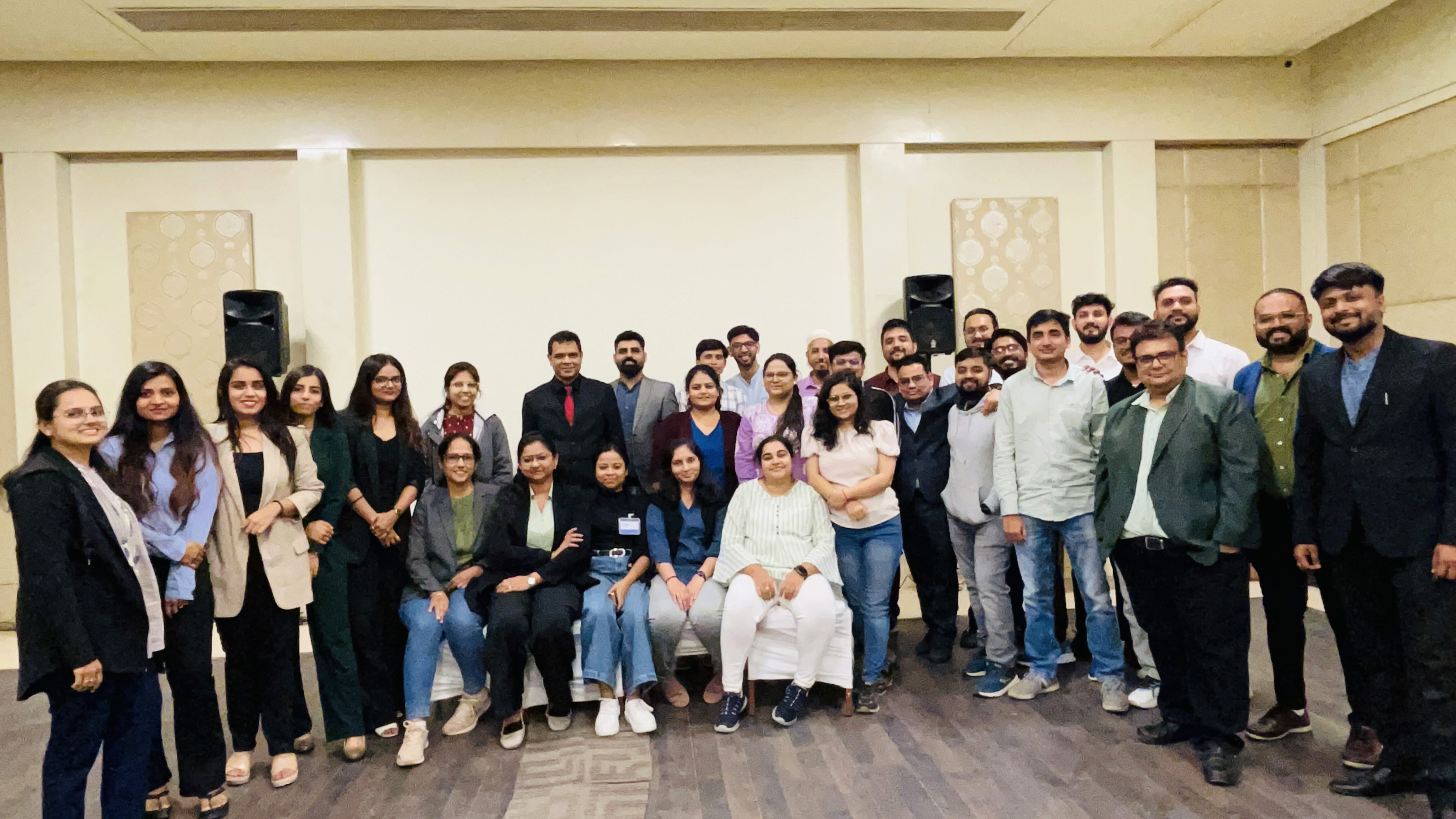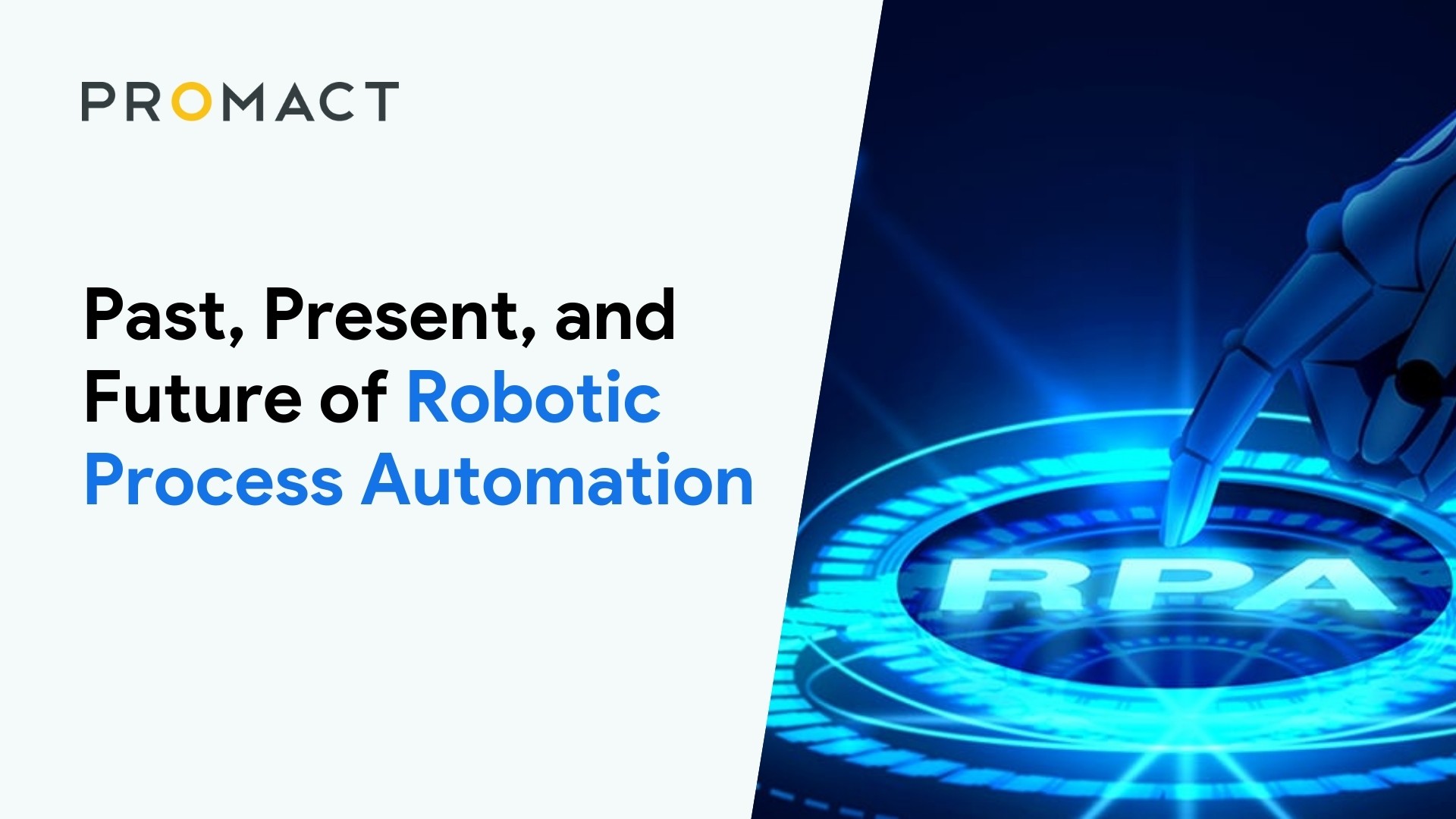RPA is the abbreviation of Robotic Process Automation, a form of business automation that uses machines to replicate and perform high volume, rule-based, repetitive tasks (that were being performed by humans) with highest level of accuracy and reduced errors, thus negating the need for human involvement. Virtual robots or software, (unlike wandering robots) are used to perform these rule-based tasks in various processes.
RPA is being used by various organizations to automate their tasks and increase the efficiency of their processes. Unlike traditional automated workflows which require the involvement of a software developer to program a list of actions for automating tasks, using RPA systems is easy because these systems can mimic human tasks by observing the user perform these tasks in the graphical user interface (GUI) of an application. These tasks include data extraction, calculations, manipulating records and transactions etc. RPA is considered as secure and reliable and can be treated as a virtually active workforce.
RPA can imitate human actions by using a combination of applications such as user interface interactions, or connectors to mainframes, client servers, or HTML code. This helps organizations enhance employee capabilities, resulting in increased efficiency of the overall business process and a reduction in the percentage of human errors.
1. What is RPA & why is it needed?
Robotic Process Automation is the need of the hour. RPA is a business process technology that automates various repetitive processes as per organizational requirements to achieve increased efficiency and reduce errors. Today, companies are using RPA to automate their daily, rule-based tasks, thus freeing up their human resources for more important and productive work.
2. History of RPA
RPA is made up of technologies like Machine Learning (ML) & Artificial Intelligence (AI) and brought together under a single toolkit that can be deployed whenever required for different kinds of processes. The term Machine Learning was coined by Arthur Samuel in 1959 who was then working with IBM. He started exploring the ML technology and later the endeavor resulted in creation of Artificial Intelligence (AI).
As technology progressed, it led to the establishment of RPA in 1990 whereas in 2000 simple RPA was developed. RPA entered the mainstream only after 2015 and gradually became inevitable when it came to task automation. Then came cognitive RPA which helps in improved Optical Character Recognition (OCR), NLP to handle semi-structured and unstructured data, thus expanding RPA’s efficiencies to a wider range of tasks.
The 2 important abilities that build up modern RPA are:
I. Screen scraping
Screen scraping was the first technology, even before the advent of the internet that created a common link between current and legacy systems and is now being used to extract data for the web’s presentation layer. However, the first of its kind screen scraping solution available in 1990 was not too reliable. But companies needed some effective screen scraping solutions for testing automation & various other tasks.
So, in early 2000 and then in 2010, companies started relying on image processing solutions rather than hard coding the component names because, with the tiniest change in the user interface modules they needed to be reprogrammed. But the screen scrapers would easily adjust with the changes in UI with high flexibility just like humans, unlike hard-coded components which made it easier to use screen scrapers.
II. Business Process Automation (BPA)
Business Process Automation or BPA helps in automating repetitive tasks. For e.g. tasks like report generation, data extraction, file transfer, etc. can be automated and the human resources can be used for strategic work which requires efficient decision making.
BPA has rule-based automation, workflows which consist of fixed processes that can be automated i.e. completion of the first step will automatically trigger the next step in the process, thus automating the entire workflow and business process. Over a period of time a lot of BPO’s & financial institutions used BPA with screen scrapers at their base to automate their repetitive processes while reducing the number of errors and increasing the efficiency & productivity of employees and the process itself.
3. The current state of RPA
RPA has rapidly grown and established itself in the past few years after an initial slowdown. Now companies are showing more confidence in using RPA and, various companies have been able to optimize their rule-based workflows and repetitive business processes by using RPA. RPA has been adopted by various large & small finance & accounting firms, banks, IT companies and since no programming knowledge is required to start using RPA, it has become easy for them to automate their workflows. This has resulted in businesses being able to survive the cut-throat competition, increased efficiency & revenues at the same time.
Jobs like data entry, data extraction, data rekeying, have been automated using RPA. The companies estimate that in the near future they will be able to automate most of their rule-based & protocol-based processes to improve efficiency and reduce errors.
Some of the benefits of RPA can be listed as:
Mostly all the rule-based, protocol-driven processes can be automated.
Simplified audit process as RPA bots can be programmed to create log files of work completed & activities done.
Various drag and drop options are available for RPA integration, so even a business owner or a vendor (non-coder) can use RPA easily.
Since RPA bots can be integrated with legacy systems, the budget of RPA implementation as compared to other apps can be controlled resulting in the overall cost-effectiveness of the process.
Additionally, RPA bots can be integrated with legacy systems using programing interfaces which is easier as compared to integrating other applications.
Also, it is preferable to have RPA app integration over screen scraping because the chances of errors are high if screen scraping is used.
Reallocation of human resources to other high productive tasks.
Improved employee satisfaction resulting in reduced turnover ratio. RPA is also easily scalable. If work increases, it can be completed by increasing the number of RPA bots which is easier and cheaper than hiring & training new employees for tasks like data entry.
Increased accuracy & efficiency with no down-time. Unlike humans, RPA doesn’t need a break or rest and can work continuously without being unproductive. This also results in increased customer satisfaction.
Improvement in data quality, reduction in manual data edits & reduced compliance errors and risks.
RPA is being used in various processes like:
I. Customer Service
RPA is being used by organizations to attend to customer requests and complaints just like a human customer service agent would attend to. E.g. chatbots can receive various customer complaints and requests across various channels, process, sort, organize and store the information in the required format. IT will further provide an appropriate solution to the complaint or request just like any human agent and if it falls under the predefined format based on customer’s input selection. This increases the speed & accuracy of the solution provided with the least amount of human intervention.
II. Supply Chain Management
RPA helps in eliminating manual inputs of purchase orders and various other admin tasks. Response to quotations and proposals can be automated using RPA bots. Inventory management processes viz. sorting, packaging, transportation & shipping and can also be streamlined using RPA. Additionally, RPA can be easily integrated with existing legacy systems in the supply chain which results in reduced errors, increased efficiency, and improved customer engagement. Various other tasks of supply chain like demand & supply planning, vendor validation and status communication, etc. can also be automated as per the company’s requirements.
III. Finance & Accounting
A lot of banks use RPA for tasks like data gathering and consolidation for financial review preparation by connecting & automating various core banking applications. Accounting firms use RPA bots for tasks like account reconciliation, standardized journal entries, intercompany reconciliation, accounts payable processing, etc. Automating these rule-based, standard tasks frees up human resources for better utilization & high productivity tasks like goal planning, financial planning, etc.
IV. Chatbots & Virtual Customer Assistants (VCA)
When the chatbots & VCA’s were developed, they weren’t as largely popular as they are now. Lot of organizations are now using chatbots and VCA’s to deliver information to customers or act on behalf of customers to perform a transaction. Bots can guide customers and provide step by step query resolutions thus helping organizations to free up their human resources.
According to Lauren Villeneuve, senior principal, advisory at Gartner, “68% of service leaders have indicated that chabots and VCA’s will be more important than ever in the next 2 years”. Additionally, she also recommends that organizations with service centers should find ways to integrate these chatbots and VCA’s into their existing operations and take advantage of this technology.
Chatbots and VCA’s can be leveraged through web chat channels and have already proved to be successful for various organizations. Chatbot applications can also be built using python, spring boot, node.js, java etc. Deploying chatbots can lead to increased chat speed, scaling and increase in problem solving capability, and even recognition of other bots trying to gain access into an organization’s system.
V. Healthcare
Introduction of RPA has revolutionized the healthcare sector. Many rule-based, high volume & repetitive tasks have been automated using RPA bots. RPA bots can be used to streamline the patient appointments as per the diagnosis, doctor’s availability, location of the patient etc.
Claims management can also be automated with RPA when the data feeding and processing tasks are automated. This will reduce the number of errors and increase the accuracy of claims processed, amount disbursed and claims rejected.
4. What future holds for RPA?
As per a report by McKinsey, it is estimated that RPA’s impact on the economy will be almost $6.7 trillion by 2025. So even if the growth of RPA was slow, these figures indicate that the growth of RPA will be fast and widespread as one of the leading technology platforms.
Although people think RPA will also take away a lot of human jobs with automation, it might not be the case. RPA will automate the process and aid companies in utilizing their human resources for highly competitive tasks like strategizing and planning instead of carrying out redundant & repetitive tasks. Market Research Future also estimates that RPA’s market share will rise with a CAGR of approximately 29% between 2017-2023 & various sectors will be able to reap its benefits.
RPA’s future is bright and it is already being used with AI. Even though RPA and AI are both are different technologies, RPA & AI will be used to create AI bots. Virtual Customer Assistants or VCA’s will also be in high demand. This will help organizations automate a lot of processes being completed by humans. The result of such advancements will be that these platforms will be able to gather data from all the unforeseen and unexpected issues & errors, learn and adapt from such situations and gradually will handle such unexpected errors in the business process thus, reducing human involvement in such processes. This mix of RPA & AI technology solutions will lead to a higher rate of RPA adoption across industries and sectors.
On a concluding thought we can say that RPA might not have been so popular across industries except BPOs & Finance. But the scenario is now changing and with the advent of AI bots & ML technology, RPA technology will become smarter & more useful in sectors like finance, healthcare, FMCG, banking, etc. RPA’s successor is SPA (Smart Process Automation) which will combine ML, Big Data, AI & Cloud Technology for data extraction & processing from unstructured sources. This data processing will be done more contextually and with enhanced rule-sets in the near future.So if you’re planning to adopt RPA technology but are unsure as to how it can be done, get in touch with us and our experts will help you out.

We are a family of Promactians
We are an excellence-driven company passionate about technology where people love what they do.
Get opportunities to co-create, connect and celebrate!
Vadodara
Headquarter
B-301, Monalisa Business Center, Manjalpur, Vadodara, Gujarat, India - 390011
Ahmedabad
West Gate, B-1802, Besides YMCA Club Road, SG Highway, Ahmedabad, Gujarat, India - 380015
Pune
46 Downtown, 805+806, Pashan-Sus Link Road, Near Audi Showroom, Baner, Pune, Maharashtra, India - 411045.
USA
4056, 1207 Delaware Ave, Wilmington, DE, United States America, US, 19806

Copyright ⓒ Promact Infotech Pvt. Ltd. All Rights Reserved

We are a family of Promactians
We are an excellence-driven company passionate about technology where people love what they do.
Get opportunities to co-create, connect and celebrate!
Vadodara
Headquarter
B-301, Monalisa Business Center, Manjalpur, Vadodara, Gujarat, India - 390011
Ahmedabad
West Gate, B-1802, Besides YMCA Club Road, SG Highway, Ahmedabad, Gujarat, India - 380015
Pune
46 Downtown, 805+806, Pashan-Sus Link Road, Near Audi Showroom, Baner, Pune, Maharashtra, India - 411045.
USA
4056, 1207 Delaware Ave, Wilmington, DE, United States America, US, 19806

Copyright ⓒ Promact Infotech Pvt. Ltd. All Rights Reserved
